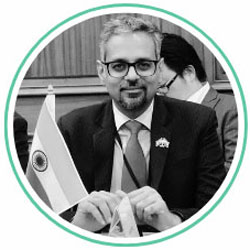Improvisation trains us to generate positive emotions through the experience of not-knowing and action engagement. Its structures and rules provide a channel through which we can learn thinking and relationship skills that strengthen the ability to pilot through uncertainty without getting hijacked by the ever-vigilant amygdala and have a ton of fun at the same time. It is real life writ large, with the interesting wrinkle that an authentically positive emotional climate is being manufactured. It is being orchestrated. And it works. Through warm-up games and exercises that unify the body, emotions and thinking process, improvisers shift their attention toward a common cause and away from suffering and pain, and even though that shift may be temporary it is real. With practice, improvisers lose some of the defensiveness we all carry around that inhibit our self-expression, and learn to trust that engagement with creative uncertainty activates the reward circuitry of the brain and makes the experience self-rewarding. The positive emotional climate in the group yields novelty and invention, broadening the field of perception and building on what is noticed and experienced in this warm but exciting social-emotional climate.
Improvisation is an experiential process that actualizes the “Broaden-and-Build Theory” of positive emotion developed by Dr. Barbara Fredrickson, Phd,— and demonstrates the skills and practices that promote sustainable positive emotional states. As a creative experience, improv parallels the real life challenge of negotiating uncertainty day to day through interaction with other people who may or may not be familiar to us. The rules and structures and inprov are designed so that a group of people can agree to support one another through a process of great uncertainty. Complete strangers can come together and successfully improvise, if agreements are made and honored. The conscious choice to try to co-create with strangers is an act of faith in itself, one that elevates the brain chemistry of curiosity and reward. To make this dynamic process even possible, improvisers must generate good will, humor, warmth and a high energy that drives spontaneity. If anyone is going to take a creative risk — which is, in the end, putting our ideas and our sense of self on the line and therefore a genuine emotional risk- there must an atmosphere of support and sense of trust. Even when there is trust and a collaborative spirit, improv is like real life in that there is always the risk that a perfect storm of performance anxiety, self-consciousness, and the element of uncertainty that is part of the improvisation experience, can trigger an “amygdala hijacking.”
 Vikram Badhwar, CEO, Syngrity, is a communications coach, an experiential educator, and an artist trying to bridge the gap between the creative and the analytical side of our brain. He consults individuals and teams in the space of learning & development to enable transformations at a personal, professional and organizational level.
Vikram Badhwar, CEO, Syngrity, is a communications coach, an experiential educator, and an artist trying to bridge the gap between the creative and the analytical side of our brain. He consults individuals and teams in the space of learning & development to enable transformations at a personal, professional and organizational level.




 MALATI VASUDEVA
MALATI VASUDEVA VIKRAM BADHWAR
VIKRAM BADHWAR PRIYANKA KUMAR
PRIYANKA KUMAR SUMAL VARGHESE
SUMAL VARGHESE














